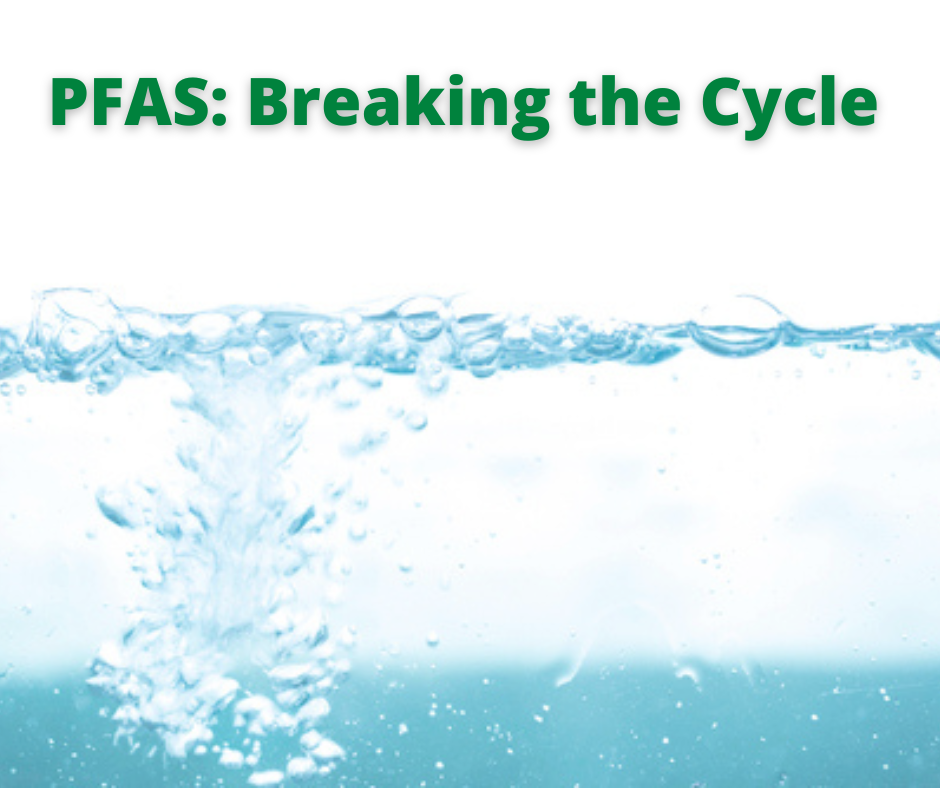
Written by: Melissa Caliente, CP Project Engineer
With our expertise in water and wastewater system troubleshooting, operational assistance, and diagnostic analysis, we have helped many clients tackle challenges related to PFAS, the shorthand reference for per- and polyfluoroalkyl substances. But PFAS are a constant, and growing topic of conversation in the world today far beyond water resources – in every arena from environmental concerns and their prevalence in our daily lives to their impact on our health and efforts to counteract current and prevent future impact.
What are PFAS?
PFAS are a “large group of manmade chemicals which repel water and oil and are resistant to heat and chemical reactions,” according to the NJ Department of Health. Because they are not biodegradable and can stay in the environment and the human body for many years, they are often referred to as “forever chemicals.” They are comprised of chains of carbon and fluorine atoms held together by some of the strongest chemical bonds in nature, making them difficult to break down and remove from carrier substances.
PFAS are present in a wide variety of consumer and commercial goods and processes because they have proven to have exceptional resistance to heat, water, and oil. They can be found in things like food packaging such as pizza boxes, candy wrappers, and popcorn bags; waterproof, wrinkle-free, and stain-proof coatings for textiles used in home furnishings and clothing; flame-retardant fabrics; fire-fighting foams; cosmetics such as nail polish and eye makeup; lubricants; paints; cleaning products; personal care products including shampoo and dental floss; and in the production of non-stick cookware. They can also enter drinking water through wastewater and runoff.
Why Do We Care About PFAS?
Because they don’t break down, PFAS remain chemically active. PFAS can enter the human body through exposure to products and drinking water, remaining there for many years. There is evidence to suggest that PFAS can cause and contribute to a myriad of health issues including reproductive challenges, impaired immunity, liver damage, thyroid disease, high cholesterol, obesity, hormone suppression, interference with vaccine effectiveness, abnormal fetal development, and cancer. New Jersey has the third highest prevalence of PFAS in the country, behind only Michigan and California (1).
What Can We Do About PFAS?
While existing efforts have thus far largely centered around remediating PFAS levels in the environment, scientists have been experimenting with various methods that may be effective in breaking down PFAS, including:
Electrical zapping: This method produces electrical discharge plasma that breaks the carbon-fluorine bonds in the PFAS and reduces the individual elements to safe levels.
Hydrothermal alkaline treatment (HALT): In this approach, scientists add an alkaline substance to the PFAS and heat it to 350 °C under high pressure. This destabilizes the PFAS molecules, so the fluoride can be extracted through more traditional methods.
High-frequency sound waves: Similar to the electrical zapping process, high-frequency sound has shown promise in providing enough energy to break up carbon-fluorine molecule bonds so each element can be remediated.
Bioremediation: This technique uses living organisms to break down the PFAS.
What’s Next with PFAS?
Despite progress made in managing and remediating PFAS levels, none will completely alleviate the challenges we face with PFAS. Many of the methods mentioned above require high-energy to facilitate and come at a high cost. Additionally, carbon-fluorine bonds are vast and varied, and it can be difficult to determine which method will work best to tackle each type. As technologies to combat PFAS are developed, new uses are introduced to the market. There is also no reliable way to remove PFAS from the body, so the best mitigation is reducing, or eliminating future exposure.
That’s why policymakers and regulators have been working to combat PFAS in the US and internationally. The US Environmental Protection Agency (EPA) has published regulations requiring manufacturers to follow stricter guidelines on reporting their use of PFAS and has proposed more rules that would clarify the hazardous nature of PFAS.
Several states have passed laws that regulate the use of PFAS in certain consumer products. New Jersey recently established strict standards for PFAS in drinking water and became the first state to adopt a maximum contaminant level. In 2019, the state ordered five companies to pay millions of dollars to help clean up PFAS.
There is still a long road to walk to fully understand and fully mitigate the impacts of PFAS on our water, the environment, and our health. As it is an issue that touches on many areas of our business and expertise, it is one we will continue to monitor and explore.